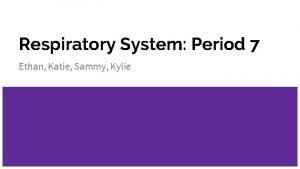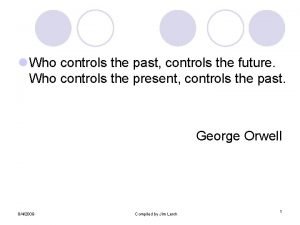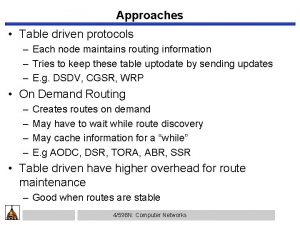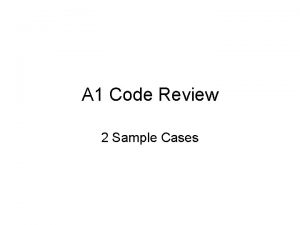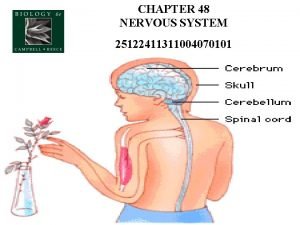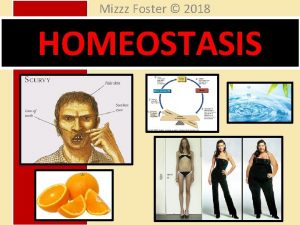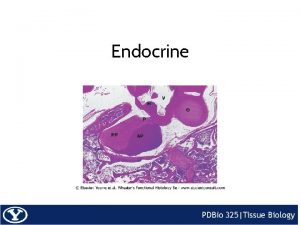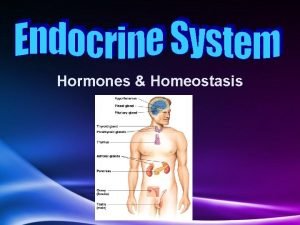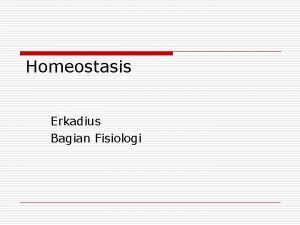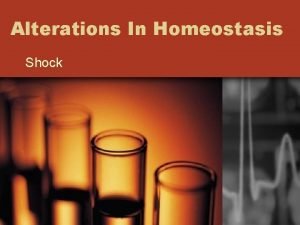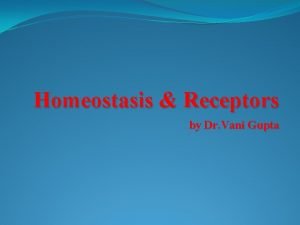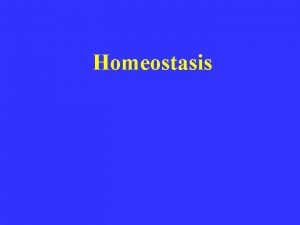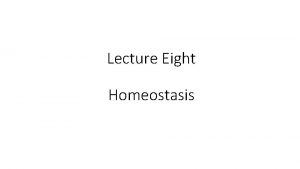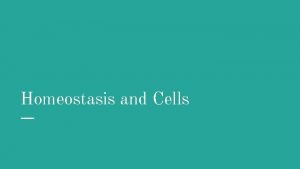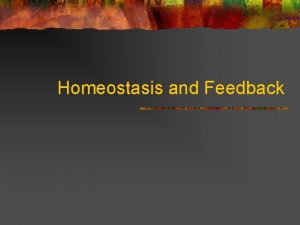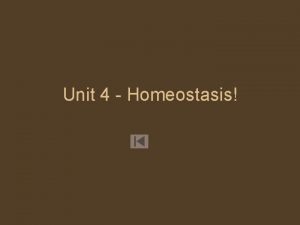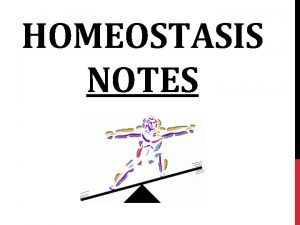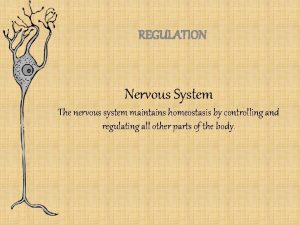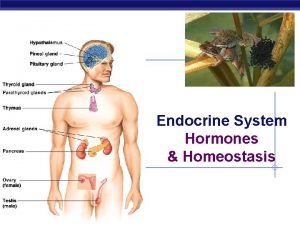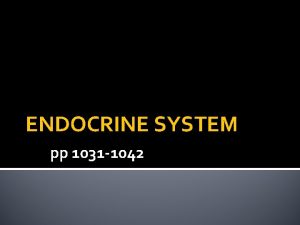Endocrine System Endocrine System maintains Homeostasis controls growth



























- Slides: 27

Endocrine System • Endocrine System maintains: Homeostasis, controls growth, development, reproduction, and metabolism by releasing different hormones.


What are hormones? • Hormones-chemical messengers secreted by cells to regulate the activity of other cells • Target organs contain receptor sites specific to a hormone

Steroid Hormone Actions: 1) diffuse through plasma membrane of target cell 2) enter the nucleus 3) bind to a specific receptor protein to form a complex 4) binds to DNA 5) activates certain genes which are translated to result in synthesis of new proteins

Non Steroid Hormone Action: • does not enter target cells • instead binds onto the target cell plasma membrane that results in a response by the cell to the hormone.

Negative Feedback Loops • The net effects of the response to the stimulus is to shut off or reduce the original stimulus. • Examples: blood glucose levels, acute stress levels

Positive Feedback Loops • Response enhances the original stimulus so that the response is accelerated. • Example: childbirth. The force of the baby’s head on the cervix causes the uterus to contract more and more

Endocrine gland stimuli types: • Hormonal- endocrine glands release hormones because of the influence of other hormones • Humoral- glands release hormones because of changing ions or minerals • Neural- hormone release in response to nervous system stimulation (sympathetic)


Major Endocrine Organs: • Pituitary- grape size, hangs from hypothalamus, surrounded by bone (sella turcica) • Two parts: – Anterior – Posterior

Anterior Pituitary secretes: • Growth hormone(GH)- effects growth of skeletal muscle and long bone • Prolactin- targets breast to produce milk after childbirth • Adrenocorticotropic(ACTH)- regulates the hormones in the adrenal cortex • Thyroid Stimulations Hormone(TSH)- influences growth and activity of the thyroid • Gonadotropic: regulates hormone activity of the gonads – FSH- function- follicle stimulating hormone- egg and sperm production – LH- triggers ovulation of an egg

Posterior Pituitary secretes: • Oxytocin- released during childbirth to stimulate contractions of the uterine muscle • Antidiuretic (ADH)- inhibits urine production by causing the kidneys to absorb water

Thyroid

Thyroid- located on the trachea (windpipe) • Thyroid hormone (T 4, T 3)- controls the rate that glucose is burned or oxidized • Calcitonin- decreases blood calcium levels by causing calcium to be deposited in bone

Parathyroid- tiny masses of tissue on the thyroid • Parathyroid hormone (PTH)- regulator of calcium in the blood-breaks down bone to release Ca




Adrenal- on top of the kidney: • Aldosterone- important in regulating concentrations of sodium and potassiumreabsorbs water, increases blood pressure • Cortisol- helps the body to resist stress Androgens and Estrogens- are collectively called sex hormones (gonadocorticoids)

Medulla: • Catecholamines- 2 examples are epinephrine (adrenaline) and norepinephrine. • Epi increases heart rate, blood pressure and breathing rate. Norepi does the oppositeslows heart rate, decreases blood pressure and breathing


Pancreas- Behind the stomach in abdomen • Insulin- acts on all body cells to increase the ability to transport glucose across plasma membranes-reduces blood glucose levels • Glucagon- acts as an antagonist to insulinraises blood glucose levels by breaking down glycogen in liver

Gonads • Females: ovaries • Males: Testes

Homeostatic Imbalances • Goiter- enlargement of the thyroid gland that results when the diet is deficient in iodine • Diabetes mellitus- glucose level rise in the absence of insulin • Acromegaly- hypersecretion of GH (growth hormone) after long bones have finished growing. Leads to elongation of jaw, eyebrows, feet, and hands

Acromegaly

Gigantism

Goiter
 Respiratory system maintain homeostasis
Respiratory system maintain homeostasis Bioflix activity homeostasis low blood glucose
Bioflix activity homeostasis low blood glucose Bioflix activity homeostasis hormones and homeostasis
Bioflix activity homeostasis hormones and homeostasis General controls vs application controls
General controls vs application controls He who controls the past controls the future
He who controls the past controls the future Maslow's theory maintains that:
Maslow's theory maintains that: Unconcerned or nonissue approach
Unconcerned or nonissue approach In each node maintains a vector (table)
In each node maintains a vector (table) North american cargo securement standard
North american cargo securement standard Maslow's theory maintains that
Maslow's theory maintains that Example of universal principles
Example of universal principles Social needs
Social needs In scrum, the ____ maintains the product backlog list.
In scrum, the ____ maintains the product backlog list. Endocrine system and reproductive system
Endocrine system and reproductive system Endocrine system and nervous system
Endocrine system and nervous system Lymphatic system vs endocrine system
Lymphatic system vs endocrine system Endo crine gland
Endo crine gland Endocrine system
Endocrine system Relative growth rates
Relative growth rates Shoot system
Shoot system Growthchain
Growthchain Primary growth and secondary growth in plants
Primary growth and secondary growth in plants Vascular ray
Vascular ray Geometric growth graph
Geometric growth graph Neoclassical growth theory vs. endogenous growth theory
Neoclassical growth theory vs. endogenous growth theory Organic growth vs inorganic growth
Organic growth vs inorganic growth Nervous system homeostasis
Nervous system homeostasis Chapter 16
Chapter 16
